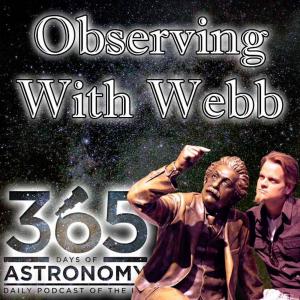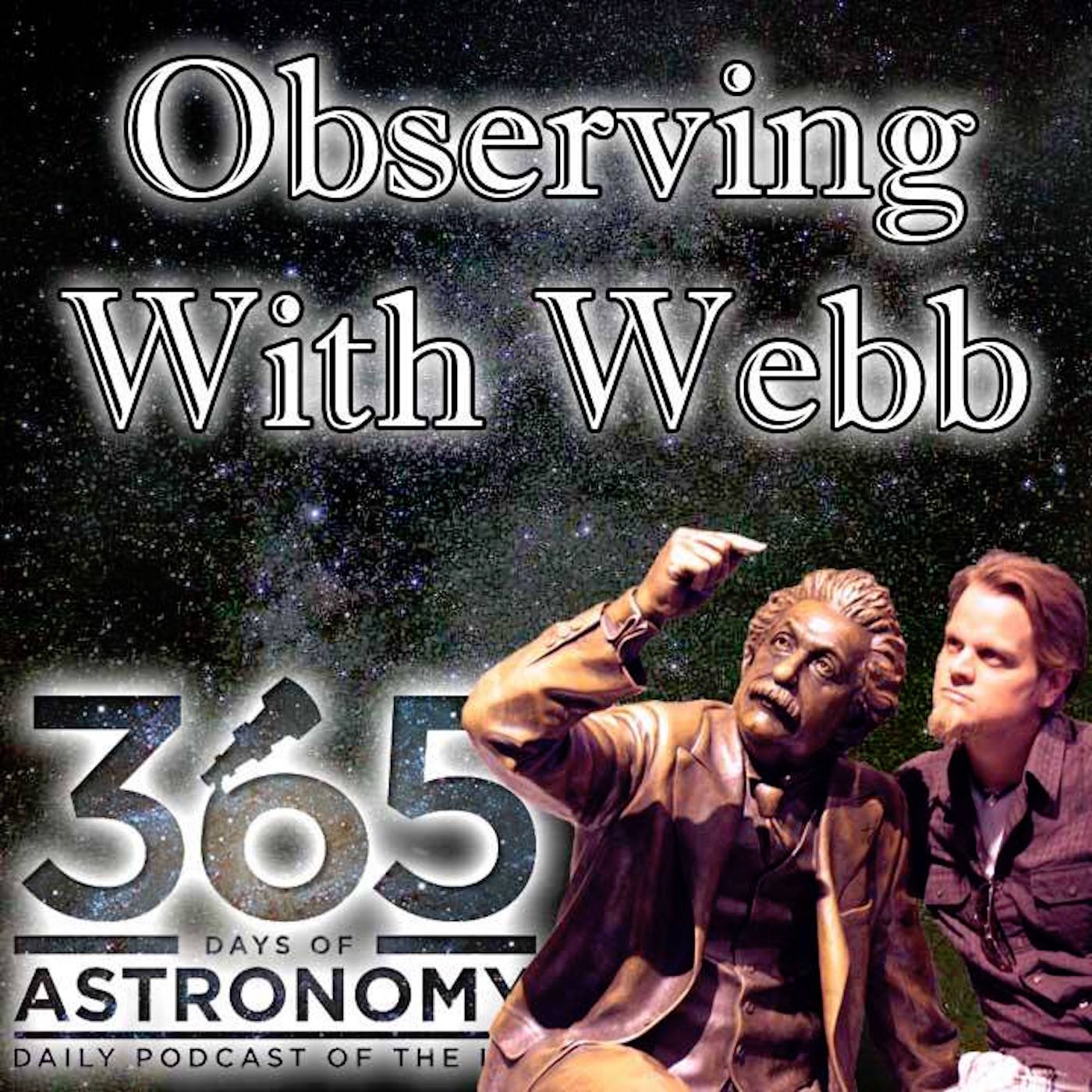Episodes

Saturday May 02, 2009
Observing With Webb May 2009
Saturday May 02, 2009
Saturday May 02, 2009
Not too much going on in May for us Northern Hemisphere Observers, other than some good opportunities to see planets and the moon close together. Some other highlights: Orion is no longer visible, but the Summer Triangle is starting to make its appearance once the sun sets. Telescopers can see the moon Titan have its shadow transit across Saturn. EVENTS... 3rd – The Moon will be very close to Saturn from our perspective. Saturn will be the brightest “star” near the moon. Look south, about halfway up towards the Zenith (the spot straight above you.) Full Moon – 9th (Planting Moon or Milk Moon) 12th – ISS will be visible for over 5 minutes! Around 9:13pm the International Space Station will be a bright moving point of light in the WSW and head toward the NE in an arc almost overhead and set around 9:18pm. Check out http://spaceweather.com/flybys/ for more flybys coming up. 14th – ISS will be visible for over 5 minutes again! Around 8:29pm the International Space Station will be a bright moving point of light in the WSW and head toward the NE in an arc almost overhead and set around 8:35pm. Check out http://spaceweather.com/flybys/ for more flybys coming up. 15th – Telescopes only – See Titan’s shadow transit across Saturn from 1:30am to 6:30am Eastern time. 21st – The Moon will be very close to Venus from our perspective. Find the moon toward the East before sunrise. You may even be able to get them into one binocular view. This is a good chance to take even the lowest quality camera out to get a neat astrophoto. You may even see Mars hanging around, too. New Moon – 24th – (darkest skies) 31st – The Moon will be very close to Saturn again in the month. PLANETS... Mercury – Only visible for the first week of May after sunset, and as always is pretty close to the sun, then it passes through the glare of the sun. VENUS – Visible in the AM around 25 ° above the horizon in the east. Mars – Hanging out around Venus for this month, too. Look to the east, find Venus, then look a little left and down to find the red “star” that is Mars. Jupiter – Rises between 3am and 1am and is visible low on the horizon in the southeast until sunrise. . SATURN – Visible almost all night for the entire month. Look in the southeast after sunset (about halfway between the horizon and the zenith), and watch it track toward the west until it sets between 1am and 3am. Check out the rings with good binoculars or a telescope! Telescopers can see the transit of Titan’s shadow on the 15th! CONSTELLATIONS... (see sky map link at the bottom for a Star Map for this month – or ask Mr. Webb) Look straight up and you'll see... Sunset (around 8pm) – Cancer, Leo 10:00 pm – Ursa Major Midnight – Bootes (To find its brightest star Arcturus, find the handle of the Big Dipper and “follow the arc to Arcturus”) Early Morning – Lyra, Hercules, Cygnus – The Summer Triangle is still starting to rise…summer is around the corner! GENERAL CONSTELLATION FINDING TIPS: Look to the east and you’ll be able to see Lyra, Cygnus, Aquila, (and Delphinus.) These three constellations have the three brightest stars of the summer constellations (Vega, Deneb, Altair – respectively.) Those bright stars create the summer triangle, which will be seen earlier and earlier as the summer goes by. Use a sky map from www.skymaps.com to help you out. A lot of credit for this information goes to: SkyMaps.com – Download the monthly sky map here Sky & Telescope Magazine ...and various sky programs such as Starry Night.


No comments yet. Be the first to say something!